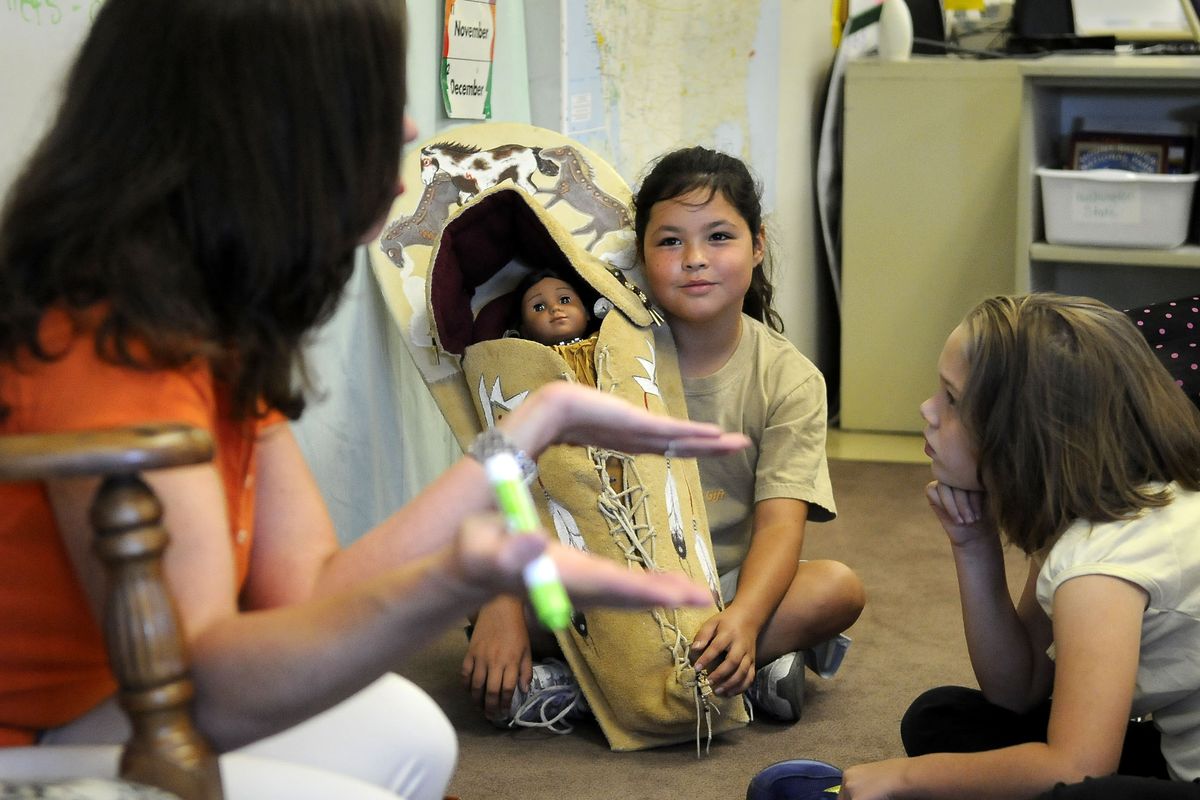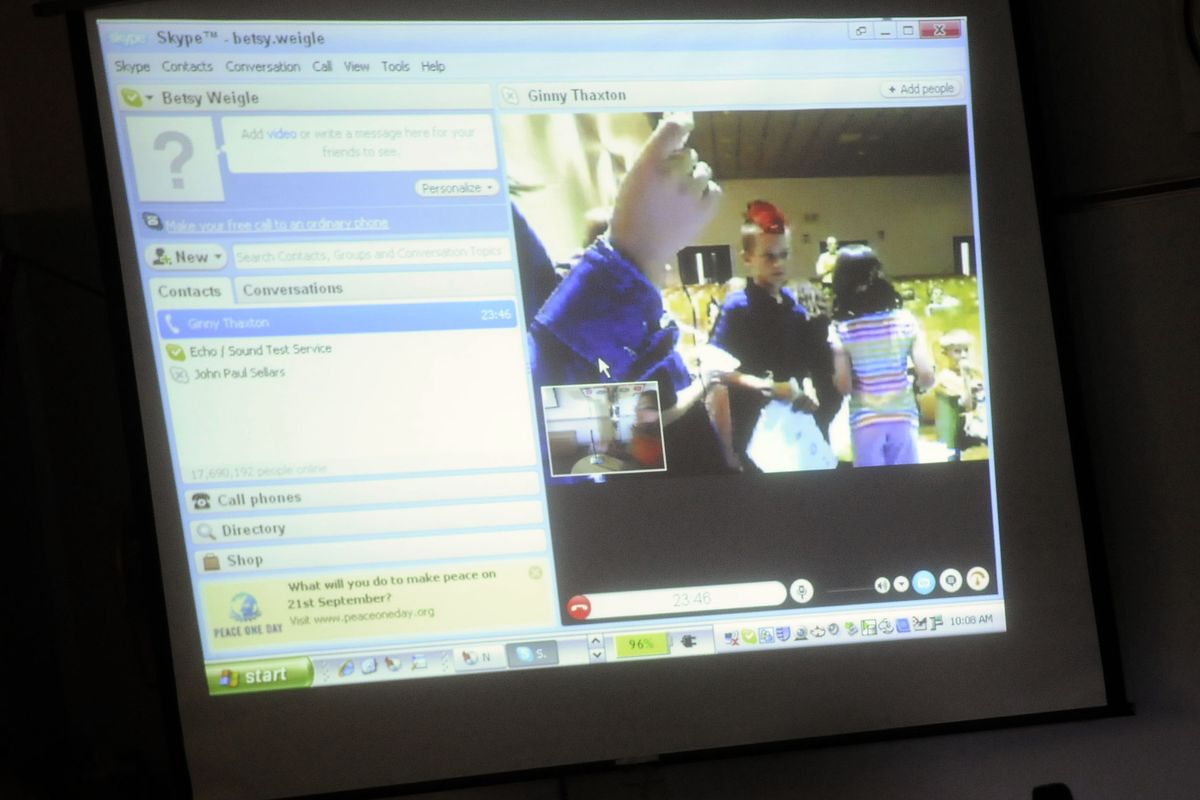Web of learning
Kids interact with peers from across the country
Holmes Elementary School fourth-grader and Spokane Tribe member Patty Hill, 9, brought her sister’s baby board to Betsy Weigle’s class on Tuesday for a lesson about Native Americans. The class included an Internet conference with students in South Carolina. (Dan Pelle / The Spokesman-Review)
Holmes Elementary fourth-graders lined up for a turn in front of a webcam to tell their peers in Summerville, S.C., about Native Americans from the Northwest.
“Hi, I’m Mariah. This is a canoe,” Mariah Burrow said as the camera panned to a construction-paper vessel. “Coastal Indians traveled in canoes. They mostly painted them red, white and black, but sometimes blue.”
Teacher Betsy Weigle is one of the first in Spokane Public Schools to use Web conferencing as a key tool for teaching.
Weigle, who’s taught for six years, is at the forefront of the district’s movement to embed technology into its curriculum, and she’s working with other teachers so they can do the same, said Lydia Fesler, the district’s elementary school literacy, social studies and kindergarten coordinator.
Weigle is using the technology in her social studies chapter on Native Americans, allowing students in other parts of the country to describe area tribes.
“This is such a new, innovative way for teaching and learning about Native groups all over the country while infusing technological skills, which are crucial to success today,” Weigle said. “What a great way to give these kids a leg up. These children at Holmes live in poverty but get the great experience of using webcams, microphones and conferencing software.”
Jane Miller, an educational technology facilitator who has been working with Weigle, said, “She’s paving the way for others with this tool.”
Weigle brainstormed the idea with other instructors at a teaching academy in New York.
“It turned out we all taught our first social studies chapters on Native Americans,” she said.
So far, Weigle has planned Web conferencing with fourth-grade teachers in Texas, Utah, Florida, Colorado, Pennsylvania, New York and Idaho.
Fesler said Weigle’s approach is the perfect way to combine curriculum goals.
“Grade-level expectations changed for social studies, so instead of just rewriting the curriculum, we are rewriting it to include instructional technology, because there are also new technology expectations,” she said.
Weigle used money from a federal stimulus grant awarded to her this year to buy the laptop, webcam and a Flip camera used for the Web conferencing, she said.
The fourth-graders’ next Web lesson with the South Carolina class is Tuesday. Then they will move on to the next state, either Florida or Texas, “with the focus being on data collection and graphing,” Weigle said.
For the first Web conferences, the children picked a few Native groups to focus on. “The kids come up with what they are most interested in and research it,” Weigle said. “The first thing the kids wanted to know is what they ate, what they wore and transportation.”
After the presentations, the students discuss the similarities and differences between the groups and ponder additional questions about the culture.
Plains Indians eat buffalo, the kids noted. That’s different from Coastal Indians, who eat salmon, deer and elk.
“If the chiefs are the wealthiest, why don’t they spend money?” fourth-grader Lala Etten asked. “Isn’t trading the same as having wealth?” the teacher replied.
John Paul Sellars, a Summerville teacher and Weigle’s first long-distance teaching partner, said: “I think this is amazing. They are experiencing the possibilities of technology in this day and age and learning what possibilities are available to them.”

